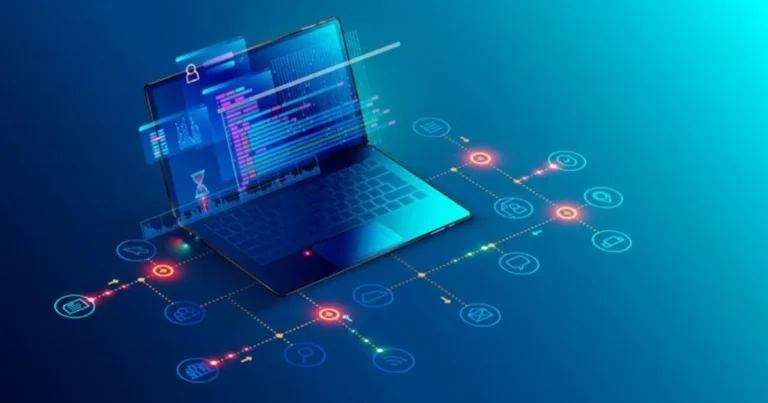Why 24ot1jxa Harmful: The Impact on Your Tech Security
In the ever-evolving landscape of technology, new threats emerge almost daily. One such menace that has gained notoriety is known as 24ot1jxa. This seemingly cryptic term represents a growing concern for anyone who uses digital devices or navigates the online world. Originating from malicious actors seeking to exploit vulnerabilities, 24ot1jxa poses serious risks to your tech security and personal data.
Introduction to 24ot1jxa and its origin
As cybercriminals become more sophisticated, understanding these threats becomes crucial for safeguarding our information. Whether you’re an individual user or a business owner, being informed about why 24ot1jxa harmful can make all the difference in protecting yourself against potential breaches and attacks. Let’s delve deeper into this alarming issue and explore its implications on your tech security.
How 24ot1jxa affects your tech security
24ot1jxa is a malicious code that infiltrates systems quietly, often without immediate detection. Once inside, it can manipulate various software and hardware components.
Its primary threat lies in its ability to create backdoors for unauthorized access. This means cybercriminals can exploit your devices remotely, gaining control over sensitive data.
Additionally, 24ot1jxa can compromise network integrity. It disrupts communication between devices, making them vulnerable to further attacks.
The impact extends beyond individual users; businesses face significant risks too. Data breaches may lead to financial loss and damage reputation.
User privacy is also at stake. With this malware lurking around, personal information becomes easy prey for hackers looking to exploit vulnerabilities.
Examples of cyber attacks using 24ot1jxa
Cyber attacks utilizing 24ot1jxa have shown alarming sophistication. One notable example involved a phishing campaign that targeted financial institutions. Attackers disguised malicious emails as legitimate communications, tricking employees into clicking links embedded with 24ot1jxa.
Another case occurred when malware was introduced through compromised software downloads. Users unknowingly installed programs tainted with this harmful code, leading to data breaches and unauthorized access to sensitive information.
Organizations also faced ransomware attacks where systems were encrypted using 24ot1jxa variants. This left companies incapacitated until they paid hefty ransom fees for recovery keys.

Additionally, social media platforms became breeding grounds for scams leveraging the allure of free products or giveaways infused with 24ot1jxa links. Users fell prey to these deceptive tactics, inadvertently compromising their personal accounts and exposing their networks to further risks.
Each instance highlights the evolving threat posed by 24ot1jxa in today’s digital landscape.
The role of social engineering in spreading 24ot1jxa
Social engineering plays a pivotal role in the spread of 24ot1jxa. Cybercriminals exploit human psychology to manipulate individuals into revealing sensitive information or downloading malicious software.
Phishing emails are a common tactic. These deceptive messages often appear legitimate, tricking users into clicking harmful links that lead to 24ot1jxa infections. The urgency and fear presented in these emails can cloud judgment, making people more susceptible to attack.
Additionally, social media platforms create fertile ground for such scams. Fraudsters craft convincing personas and engage with potential victims, building trust before launching their attacks.
By understanding how social engineering operates, users can become more aware of the risks associated with unexpected communications. Awareness is crucial in thwarting attempts by cybercriminals aiming to leverage emotional responses for nefarious purposes.
Steps to protect yourself from 24ot1jxa
To safeguard yourself from 24ot1jxa, start by employing strong passwords. Use a combination of letters, numbers, and symbols to create unique credentials for each account.
Next, enable two-factor authentication wherever possible. This adds an extra layer of protection that can thwart unauthorized access.
Be cautious with email attachments and links. Always verify the sender’s identity before clicking on anything suspicious. Phishing attempts often disguise themselves as legitimate communications.
Regularly update your software and operating systems too. Developers are constantly releasing patches for vulnerabilities that cybercriminals may exploit.
Educate yourself about common cyber threats. Awareness is key in recognizing potential dangers posed by malware like 24ot1jxa. Stay informed and proactive to keep your tech secure against evolving threats.
The importance of updating software and antivirus programs
Keeping software and antivirus programs updated is crucial for maintaining optimal tech security. Software developers constantly release updates to patch vulnerabilities that cybercriminals exploit.
When you delay these updates, your devices become easy targets. Outdated systems often lack the latest defenses against malware and viruses. This can lead to data breaches or loss of sensitive information.
Antivirus programs also need regular updates. New virus definitions are added frequently, ensuring protection against the latest threats. Without these updates, even the best antivirus solutions may miss emerging dangers.
Moreover, many updates come with performance enhancements too. Updated software runs more efficiently and can offer new features that improve user experience.
Making it a habit to check for updates regularly helps safeguard your technology from risks posed by malware like 24ot1jxa and others lurking in cyberspace.

Stay vigilant against 24ot1jxa for better tech security
Staying vigilant against 24ot1jxa is essential for safeguarding your digital landscape. Awareness is the first line of defense in this ongoing battle.
Regularly monitor your devices and networks. Look out for unusual activities that could signal an intrusion. Anomalies often indicate a breach or attempted attack.
Educate yourself about common tactics used by cybercriminals associated with 24ot1jxa. Knowledge empowers you to recognize potential threats before they escalate.
Engage in proactive measures like creating strong passwords and varying them across platforms. Simple changes can make it harder for malicious actors to gain access.
Encourage others around you, whether family or colleagues, to adopt similar security practices. A united front enhances overall safety against these harmful intrusions.
Remember, tech security isn’t a one-time effort; it’s an ongoing commitment requiring constant vigilance and adaptation to new challenges.
Important Factors Must Know
Understanding 24ot1jxa starts with recognizing its methods of infiltration. This malicious code often targets outdated systems and vulnerable software, making updates critical.
The origin of 24ot1jxa can be traced back to various cybercriminal groups exploiting weaknesses in tech. Awareness of these origins helps users identify potential threats early.
Another important factor is the role of user behavior. Falling for phishing schemes or clicking on dubious links increases risk significantly.
Moreover, password hygiene cannot be overlooked. Weak passwords make it easier for attackers to gain access to sensitive information.
Training employees about tech security protocols is vital for organizations. A well-informed team can act as a first line of defense against attacks related to 24ot1jxa.
FAQ’s
What does 24ot1jxa mean?
24ot1jxa is typically associated with malicious software or a code used in cyber attacks. Understanding its implications helps users take precautionary measures.
How do I know if my device is infected?
Signs of infection may include unusual slowdowns, unexpected crashes, or unauthorized access to your accounts. It’s crucial to monitor your device regularly for such indicators.
Can antivirus software detect 24ot1jxa?
Many reputable antivirus programs can identify and neutralize threats like 24ot1jxa. Keeping your software updated enhances protection against new variants.
Is it safe to click on links from unknown sources?
No, clicking on unverified links poses risks as they may lead you directly into traps set by malware like 24ot1jxa. Always verify the source before engaging.
How often should I update my passwords?
Regular updates are recommended—at least every three months—to maintain account security and reduce vulnerability against threats including 24ot1jxa.
Conclusion
The rise of 24ot1jxa has raised significant concerns in the realm of tech security. Understanding its origins helps shed light on why it poses such a threat. As we’ve seen, this malicious code can infiltrate systems and lead to serious breaches.
Cyber attacks utilizing 24ot1jxa are becoming more sophisticated, and examples abound in recent reports. The role of social engineering is crucial; attackers often exploit human psychology to spread their harmful payloads effectively.
Taking preventative measures is essential for anyone navigating the digital landscape today. Regularly updating software and antivirus programs ensures that systems remain fortified against emerging threats like 24ot1jxa.
Staying vigilant means being aware of potential risks and recognizing the signs of compromise early on. By understanding why 24ot1jxa is harmful, individuals can take proactive steps to safeguard their information and technology from these evolving cyber threats.
Adopting good cybersecurity practices not only protects personal data but also contributes to a safer online environment for everyone involved.







